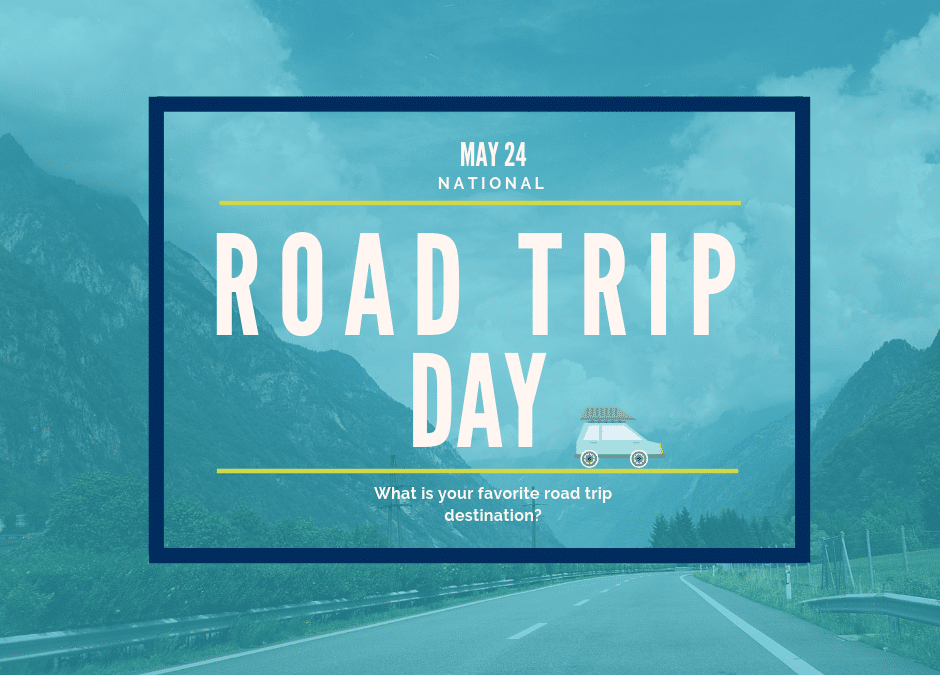


How Not to Get Thumped by Summer Storms
The summer storm season is here. There has been record flooding, a rash of tornadoes, and an increase of insurance claims due to hail in many areas of the country. The National Oceanic Atmospheric Administration (NOAA) estimates that hail causes $1 billion dollars in damage to property and crops every year, and the combination of wind, hail, and flood account for over $16 billion in insured damage. Severe weather losses have risen dramatically in the past few years due to increased repair costs and the severity of the storms.
Are you prepared? A major storm is no time to find your possessions are below the water line or you have nothing to cover your windows if they should be blown or broken out. Here are things you can do now:
- Survey your property for flood potential, levees, etc.
- Make sure trees on your property are healthy and properly trimmed
- Check and clean gutters and downspouts
- Have your roof inspected to make sure it is still waterproof and will shed excess rain
- Install a sump pump in basements ( many experts recommend a second battery-powered sump pump in case of excess water or if there’s a power outage)
- Install shutters to protect your home from high winds and hail
- If you don’t have shutters, make sure you have boards 5/8 exterior grade or marine plywood to cover windows and doors
- Make sure you have flood and sewage backup coverage
- If possible, park your vehicle in a covered spot or in a garage
- Purchase a hail-resistant cover for your vehicle
- Complete a home inventory
- Prepare an evacuation kit
- Know safe evacuation routes and have a family communication plan if you get separated
Before the next storm hits, it’s important to make sure you have the proper insurance and understand what is and is not covered. Here are things you need to know:
- Most homeowners insurance does not cover the flooding from high water. Separate flood insurance needs to be purchased.
- Most homeowners insurance covers hail, wind and lightning damage to your property, often with a deductible that you pay first.
- You must have comprehensive coverage on your auto insurance policy to cover your vehicle from hail, flood, or damage from falling trees or limbs. It also usually comes with a deductible.
Here is what you should do if you suspect your home or car has suffered storm damage:
- Document the time, date and severity of the storm
- Contact your insurance company
- Work only with licensed contractors for repairs and check with the Better Business Bureau to prevent fraud
This article is furnished by California Casualty, providing auto and home insurance to educators, law enforcement officers, firefighters, and nurses. Get a quote at 1.866.704.8614 or www.calcas.com.
Make the Most of Your Memorial Day Getaway
 If you’re piling into your car or truck for Memorial Day fun, here are important tips to keep it from becoming a “Griswold Family” vacation:
If you’re piling into your car or truck for Memorial Day fun, here are important tips to keep it from becoming a “Griswold Family” vacation:
- Plan ahead – research the route and possible hazards and know the rules of the road in the new places you’re traveling to
- Have your vehicle serviced – make sure it’s road-worthy by having fluids, tires, battery and other essentials checked and replaced
- Prepare a safety kit – extra water, jumper cables, fire extinguisher, reflective triangles and sealant for flat tires can be trip savers in an emergency
- Get plenty of rest – drowsy driving is dangerous. The effects of driving for 18 hours straight can equate to a blood alcohol level of .05; 24 hours straight is equivalent to a blood alcohol level of .10. Switch drivers or take a short nap if you feel tired
- Always wear seat belts – safety groups estimate seat belts save 14,000 lives a year, yet as many as 10 to 20 percent of drivers don’t buckle in themselves or their passengers
- Observe “move over” laws – every state now has a move over law requiring you to slow down and move over when you see an official vehicle with it’s warning lights on, to protect highway workers, first responders and law enforcement officers
- Never leave children or pets in a vehicle – the heat inside a vehicle can reach dangerous levels in less than half an hour, even on 70-degree days
If you’re having a get-together instead of a getaway, remember these important safety tips:
- Understand safe grilling – read grill instructions, check hoses, keep grills away from structures and never leave them unattended to avoid a disastrous fire
- Check your deck – inspect and repair cracked boards, loose planks and rails, rusty hardware or rotted supports to prevent dangerous collapsing
- Know pool safety – keep uninvited guests and small children out with full fencing, teach everyone in your family how to swim, never leave children alone near a pool, know CPR and consider removing slides and diving boards
- Ensure you have enough liability protection – protect your assets with high liability limits or an umbrella policy in case someone sues if they get hurt at your home. Umbrella policies help pay for legal defense, medical costs and loss of wages
Whether you are home or away, some auto repairs may be more complicated. That’s why it’s important to have a reliable backup. Whether the battery let you down, your spare tire went flat or you locked the keys in the car, for as little as a couple dollars a month California Casualty’s towing and roadside assistance pays for:
- Dead battery start
- Flat tire repair
- Lockouts
- Fuel, oil or coolant delivery
California Casualty’s towing service also covers getting your vehicle to the nearest shop, even if you get stranded off-road in deep mud.
TAKEAWAY:
Contact our Customer Service department to add Express Road Assistance or to purchase extra liability insurance at 1.800.800.9410 option 3, or email service@calcas.com.
Read all the articles from the this edition of the Calcas Connection Newsletter:
6 Inexpensive Classroom Organization Hacks
Our Education Blogger is a public school teacher with over a decade of experience. She’s an active NEA member and enjoys writing about her experiences in the classroom.
Organize your classroom on a budget. From labeling to sorting supplies, this list of must-have, inexpensive classroom organization hacks will help get your school year off to a great start and keep it tidy all year:
Colorful Plastic Caddies
Plastic caddies have multiple uses in the classroom. Place materials in them for easy science experiment or art station set up. If your students sit in groups, use the caddies to store necessary, daily utensils and supplies. Use them for art supply storage, math manipulative storage, or to simply organize your desk. I purchased my caddies from Target in the dollar bins ($3 each). I have also seen them at various dollar stores.
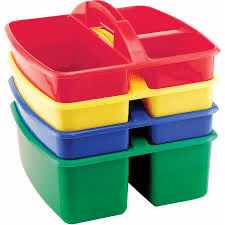
Milk Crates
Milk crates are a perfect fit for folders and files. I use one of my crates to store Student Data Folders when we are not recording in them. When I need to lug around supplies, I tend to use a milk crate. When topped with a homemade cushion, milk crates make great seats and benches (see Pinterest for millk crate seat ideas and tutorials). Stack them for use a classroom library (ziptie each crate together for stability and don’t overfill). I found some durable milk crates on sale at Target when all of the college dorm items go on sale.
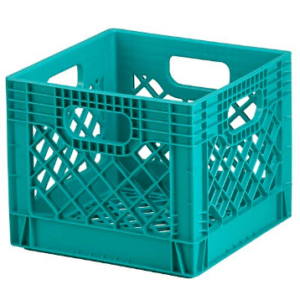
Binders
Binders are great way to organize just about anything paper-related. Use them to file away your master copies, one binder for each subject or hour you teach. A substitute binder makes preparing for your absences a cinch. Archive student work in student portfolio binders. Store absent work and extra copies in a classroom binder for students to access as needed. Binders also make tracking student data simple. Label your binders with these free, editable, printable binder covers and spines from Curriculum Corner. 
Labels, Labels, and More Labels!
This will help you and your students locate supplies and materials around the classroom in a jiffy! In my experience, if it is labeled, I’m more likely to use it; I simply forget it’s there! I found several free, editable, printable labels on TeachersPayTeachers.
Black and White Chevron Labels
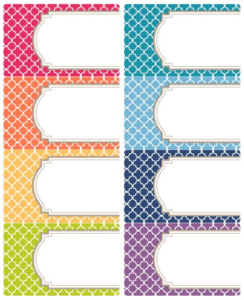
Plastic Drawers
While plastic drawers aren’t inexpensive, you’ll see them as a savvy investment down the road. I purchased 4, 3-drawer units and will never go back to my previous method of organization. Label the drawers with each day of the week and place your lessons, materials, and other items for the day inside. Set aside drawers to label as “To Copy” and “To Grade” to help organize your piles of papers. I also use one drawer as the “Emergency” lesson plan drawer in case of an unexpected absence. Plastic drawers are helpful in storing and organizing manipulatives, art supplies, extra work, absent work, and copies for future lessons/units. Don’t forget to label your drawers!
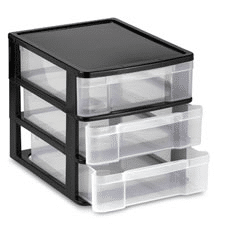
Shoebox-sized Clear Bins
This one is a no-brainer. I never seem to have enough of these around. Small, plastic bins are one of the most versatile organization items in the classroom. Use them to store extra supplies, manipulatives, craft items, and games. Use labels to help identify what’s inside. They are easy to stack and easy for even the youngest of students to access. Dollar stores usually have these, but they aren’t great quality. I go for Sterilite and Rubbermaid brands when I can get them on sale. I also ask for these from parents in my Teacher Wish List at the beginning of the school year.
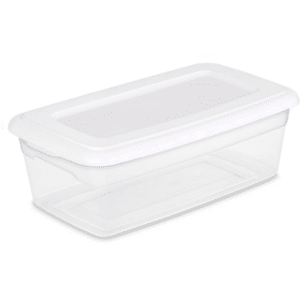
What are your favorite tricks to organize your classroom on a budget?
This article is furnished by California Casualty, providing auto and home insurance to educators, law enforcement officers, firefighters and nurses. Get a quote at 1.866.704.8614 or www.calcas.com.
Drones: The New Threat to Firefighters
Drones: They are the new rage with millions now in the hands of hobbyists across the nation. They hoover, dive and provide amazing videos of dramatic scenery and inaccessible areas. While unmanned aircraft systems (UAS) can provide exciting new ways to recreate and view your neighborhood, they are also threatening firefighting operations across the U.S. The incidence of unauthorized drones spotted in fire areas across the country has increased dramatically the past few years, and the situation appears to be getting worse.
Unmanned aircraft have disrupted and canceled water and retardant drops because of the fear of a collision with firefighting planes. It’s also a hazard to smoke jumpers, helicopters and crews on the ground. Flying a drone near a fire is not only dangerous, it is illegal.
Anyone caught interfering with firefighting operations with a drone can be arrested and could face a $25,000 fine and criminal prosecution.
The following are some new strategies being employed to alert UAS pilots to areas they cannot fly, and to stop them if they do.
The FAA has is creating temporary “no-fly zones” around fires and making the information available to pilots of all types, especially recreational drone users. The FAA is urging all UAS operators to visit and download the B 4UFLY smartphone app that provides the restrictions in their area.
The U.S. Department of Interior has launched the “If YOU Fly, We Can’t” campaign with videos, PSAs and posters alerting drone owners of the risks.
Technology is also being tested to prevent drones from flying in areas where a restriction is in place. GPS and geo-fencing systems can literally ground a UAS in a fire-restricted area. The electronic blocking is already being employed around airports, military bases, nuclear power plants and the nation’s capital.
Keep in mind, it often takes a day or two before fires are noted and mapped for the system and the FAA warns that all pilots, including drone operators, are responsible for knowing the rules and local ordinances. In other words, you are responsible for flight safety at all times and can be cited for any careless or reckless actions that endanger others in the air or on the ground.
The FAA requires all operators to be 13 years or older and to register any drones that weigh more than .55 pounds. All UAS pilots must also adhere to these rules:
- Fly no higher than 400 feet
- Keep the UAS within sight
- Never fly near other aircraft, especially near airports
- Never fly over groups of people, stadiums or sporting events
- Never fly near emergency response efforts such as fires
- Never fly under the influence
- Be aware of airspace requirements
All the restrictions can be viewed at https://www.faa.gov/uas/getting_started/fly_for_fun/.
Education about the risk is considered the key to preventing more of these situations. If you have a drone, you need to know the rules of where and when to fly and be aware of the dangers to others. If you are a first responder, you may want to share this information with as many people as possible.
Firefighter’s jobs are already dangerous enough, that’s why California Casualty is asking all of us to be careful and know important drone rules that can save lives.
